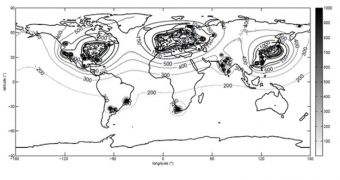A group of scientists has recently proposed a new method of testing whether rogue nations suspected of being involved in constructing and operating nuclear reactors are actually building such structures.
In the approach, which is non-invasive, so to speak, antineutrino detectors would be installed off the coast of suspicious nations, from where they will collect data that cannot be easily screened.
This proposal comes from experts at the French Alternative Energies and Atomic Energy Commission, who were led by expert Thierry Lasserre, Technology Review reports.
In the international community, there is a body whose task is to keep an eye on the spread of nuclear technology, especially in countries that have not yet adhered to treaties aimed at stopping the proliferation of nuclear fission for combat.
The Vienna, Austria-based International Atomic Energy Authority (IAEA) has to be on the watch at all times, but this is very often difficult to do. Many of the governments suspected of operating nuclear reactors don't allow IAEA inspectors access to nuclear facilities.
As such, the agency has been over the past few years orienting itself towards supporting the development of detection methods that work at a distance, therefore eliminating the need for on-site inspections.
At this point, inspectors operate near-field detectors, which are only efficient within tens of meters from an active nuclear reactor. Needless to say, this is useless if inspectors are not at the location.
This is why the French team decided to take a new approach in tracking reactors, by keeping tabs on the antineutrinos these facilities produce.
According to statistics, a single, gigawatt-sized reactor can generate as much as 10^21antineutrino particles, which means that they show up on detectors tuned to these elementary particles without a problem.
The issue that the group had to overcome was the fact that neutrinos, regardless of variety, are very tricky to spot. They don't interact readily with regular matter, instead passing right through it.
Existing technologies can only detect neutrinos in vast devices, such as swimming pool-sized basins. There are also thousands of noise sources around, so telling “friendly” reactors form concealed ones is hard.
In their approach, the French estimated the amount and type of background antineutrino emissions they can expect to see in various situations, and compensated for this in their detectors.
“Our study attests that 138,000 ton neutrino detectors have the capability to detect and even localize clandestine reactors from across borders, “ the group argues.

 14 DAY TRIAL //
14 DAY TRIAL //